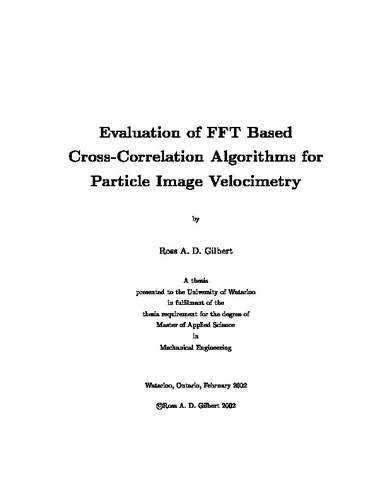| dc.description.abstract | In the current study, the four most common Particle Image Velocimetry (PIV) cross-correlation algorithms were evaluated by measuring the displacement of particles in computer generated images. The synthetic images were employed to compare the methods since the particle diameter, density, and intensity could be controlled, removing some of the uncertainty found in images collected during experiments, e. g. parallax, 3-D motion, etc. The most important parameter that was controlled in the synthetic images was the particle motion. Six different displacement functions were applied to move the particles between images: uniform translation, step, sawtooth, sinusoid, line source and line vortex. The four algorithms, which all use the fast Fourier transform (FFT) to perform the cross-correlation, were evaluated with four criteria; (1) spatial resolution, (2) dynamic range, (3) accuracy and (4) robustness. The uniform translation images determined the least error possible with each method, of which the deformed FFT proved to be the most accurate. The super resolution FFT and deformed FFT methods could not properly measure the infinite displacement gradient in the step images due to the interpolation of the displacement vector field used by each method around the step. However, the predictor corrector FFT scheme, which does not require interpolation when determining the interrogation area offset, successfully measured the infinite displacement gradient in the step images. The smaller interrogation areas used by the super resolution FFT scheme proved to be the best method to capture the high frequency finite displacement gradients in the sawtooth and sinusoid images. Also shown in the sawtooth and sinusoid images is the positional bias error introduced by assuming the measured particle displacement occurs at the centre of the interrogation area. The deformed FFT method produced the most accurate results for the source and vortex images, which both contained displacement gradients in multiple directions. Experimentally obtained images were also evaluated to verify the results derived using the synthetic images. The flow in a multiple grooved channel, using both water and air as the fluid medium in separate experiments, was measured and compared to DNS simulations reported by Yang. The mean velocity, average vorticity and turbulent fluctuations determined from both experiments using the deformed FFT method compared very well to the DNS calculations. | en |

